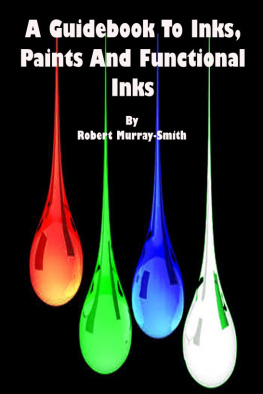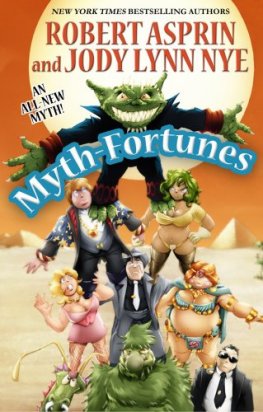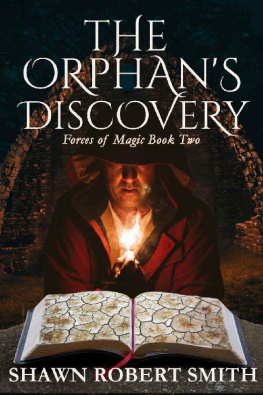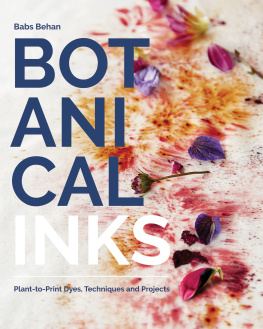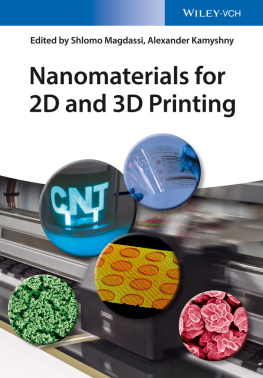Robert Murray-Smith - A Guidebook to Inks,Paints and Functional Inks
Here you can read online Robert Murray-Smith - A Guidebook to Inks,Paints and Functional Inks full text of the book (entire story) in english for free. Download pdf and epub, get meaning, cover and reviews about this ebook. genre: Romance novel. Description of the work, (preface) as well as reviews are available. Best literature library LitArk.com created for fans of good reading and offers a wide selection of genres:
Romance novel
Science fiction
Adventure
Detective
Science
History
Home and family
Prose
Art
Politics
Computer
Non-fiction
Religion
Business
Children
Humor
Choose a favorite category and find really read worthwhile books. Enjoy immersion in the world of imagination, feel the emotions of the characters or learn something new for yourself, make an fascinating discovery.
- Book:A Guidebook to Inks,Paints and Functional Inks
- Author:
- Genre:
- Rating:3 / 5
- Favourites:Add to favourites
- Your mark:
- 60
- 1
- 2
- 3
- 4
- 5
A Guidebook to Inks,Paints and Functional Inks: summary, description and annotation
We offer to read an annotation, description, summary or preface (depends on what the author of the book "A Guidebook to Inks,Paints and Functional Inks" wrote himself). If you haven't found the necessary information about the book — write in the comments, we will try to find it.
A Guidebook to Inks,Paints and Functional Inks — read online for free the complete book (whole text) full work
Below is the text of the book, divided by pages. System saving the place of the last page read, allows you to conveniently read the book "A Guidebook to Inks,Paints and Functional Inks" online for free, without having to search again every time where you left off. Put a bookmark, and you can go to the page where you finished reading at any time.
Font size:
Interval:
Bookmark:
by
Robert Murray-Smith
Copyright 2014 Robert Murray-Smith
Smashwords Edition
This ebook is licensed for your personalenjoyment only. This ebook may not be re-sold or given away toother people. If you would like to share this book with anotherperson, please purchase an additional copy for each recipient. Ifyoure reading this book and did not purchase it, or it was notpurchased for your use only, then please return to Smashwords.comand purchase your own copy. Thank you for respecting the hard workof this author.
The aim of this book is to give a little ofthe background regarding the making of conductive inks and tosuggest some possible uses and further experiments for them whenapplied as thick films.
The book concentrates on the use of inksproduced by FWG. The main reason for this is that FWG inks areconductive, like a lot of inks out there, but because of theirunique nano-structure they posses some very interesting propertiesnot normally found in other conductive inks.
However, the book does extend to thick filmfunctional inks per se and to the use of inks not produced by FWGso, a lot of what is discussed is equally applicable to functionalink deposition in general and as such some recipes for theformulation of additional inks is given in later chapters of thisbook to aid in the development of functional devices based on inksthat can be made by the experimenter themselves in their own labsopening up the opportunity for the creation of new inks, newdevices and new ideas.
A book like this is, in fact tremendouslydifficult to write as it tries to do quite a few things. Firstly itis a discussion on the nature of functional inks along with some ofthe considerations needed in order to make inks. Secondly, it triesto present some recipies in an easy to follow format that can deused as baseline recipies for further exploration and developmentand thirdly it presents some possible uses for the inks and ideason where to go when developing new inks and new applications.
Because the book tries to do so much it is ofnecessity a bit of a confused beast that may well have been betterserved by being three separate books but there we have it Ihave tried to do all three at once and for that I am bound to haveleft everybody dissatisfied to at least some degree.
In order to overcome this to an extent thebook is divided into a main body which discusses inks and theirgeneral considerations and then there is a whole load of appendixesthat each cover quite a variety of information that I have eitherwritten myself or lifted ad hoc because I thought it was useful tothe would be inventor.
Some of the appendices go into quite a lot ofdetail about the types and materials needed when making your owninks, some are just general ideas and some are specificimplementations that can be converted into printed form. As I saidthese are included because I thought they were fascinating, notgenerally known and would make a great springboard for furtherdevelopment.
I hope this helps
A Definition Of Thick Films
It is almost impossible to definerealistically what a thick film is it's like trying to answer thequestion how long is a piece of string (by the way, it is twiceas long as the distance from the middle to one of its ends). Thisis why there are a whole host of films that can quite easilyqualify as thick.
Thick films sit conceptually in the spacebetween thin films and bulk materials, which is exactly why thedefinition of a thick film is difficult to express. Quite often, inthe literature, 1m will be quoted as the separation between thinand thick films with little reasoning behind why this should be so.Likewise, and for equally arbitrary reasons, 100 m is often givenas the upper limit of the thickness of a thick film.
An alternative definition (and one with somephysical basis) considers the lower limit to be the thickness abovewhich the role of an individual atom is no longer critical whichmakes sense if you think about it, whereas an upper limit isdefined by the point at which the film becomes self-supporting andno longer requires a substrate in other words the point at whichit moves from being a film to being a sheet 9or a bulk material).Interestingly enough these criteria result in a thickness range ofbetween about 1 and 100 m.
A film only really becomes a film when itstops being a collection of isolated particles on a surface andstarts forming a continuous coating. This requires a minimum of 23layers of particles. If the average size of a material in an ink is500 nm (a common size for typical conductive fillers althoughsome FWG fillers go down to 4nm and could quite easily be used forthin films) then a film with only 23 particle layers would bearound 1m thick. For the upper limit, sheets that are 100 m thickare sufficiently robust to be handled as free standing structures this is comparable to a glass microscope cover-slip. Furthermore, a100 m thick film will have approximately 200 grains across itsthickness, which is a reasonable number of grains to consider as anupper limit for a thick film. If there were many more grainspresent it could be argued that the placement of an individualgrain has a negligible effect on the behaviour of the material,just like in the placement of individual atoms do at the thin film- thick film transition point. Obviously there is a degree ofleeway, so we should not discount a 0.5 m film as a thick filmjust because it is too thin in the same way we would not discount a150 m film because it is too thick, but it certainly gives us arange of limits in which we are working and the book willconcentrate on that.
Methods Of Deposition.
Take a closer look at the definition
A thickness where individual atoms are nolonger critical in defining the film.
This stems from the idea that there are agreat many atoms present so that if one atom is missing or out ofplace it will not affect the film or its properties. If there are agreat many atoms present this means that it would take a great dealof time to construct the film on an atom-by-atom basis (a bottomup approach). So it is pretty obvious that atomic level depositiontechniques won't be much use at producing thick films and the verydefinition begins to direct the path we are likely to take whenconstructing thick films
The second part of the definition relates tothe films' ability to be self-supporting. Again this points towardsthe fact that trying to mechanically thin a large piece of materialand place it onto the substrate won't be an effective method offabrication (a top down approach) as the material is unable tosupport its own weight.
Another way of looking at it is that thedefinition itself begins to dictate the manufacturing techniquesand materials that are capable of depositing a significant quantityof material over a large area in a short period of time andconsequently the whole thrust of thick film deposition centersaround the use of inks and painting or printing techniques asmethods of deposition.
A Brief History Of Inks.
Its a strange thing but throughout historythere has been very little written about the history of ink.Historians seem almost willful in their neglect about recordinginformation on the very material with which they recordinformation. This seemingly curious aberration has lead to asituation in which the materials, methods and rational behind thecreation of inks has assumed almost mythical status and theprocesses with which inks are created has become an alchemistssecret as jealously guarded as the philosophers stone ever was.Those few who do know its history and the secrets of itsformulation keep those secrets very close and treat them with ajealous regard once thought only to be the province of medievalguilds. Interestingly enough this is an attitude that has beenpreserved as the range of inks has extended itself into thefunctional realm.
Font size:
Interval:
Bookmark:
Similar books «A Guidebook to Inks,Paints and Functional Inks»
Look at similar books to A Guidebook to Inks,Paints and Functional Inks. We have selected literature similar in name and meaning in the hope of providing readers with more options to find new, interesting, not yet read works.
Discussion, reviews of the book A Guidebook to Inks,Paints and Functional Inks and just readers' own opinions. Leave your comments, write what you think about the work, its meaning or the main characters. Specify what exactly you liked and what you didn't like, and why you think so.

